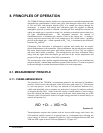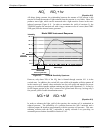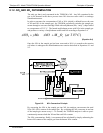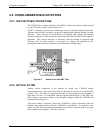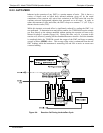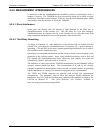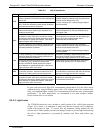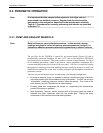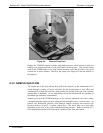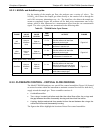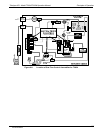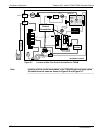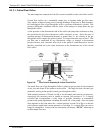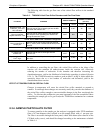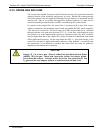
Principles of Operation Teledyne API - Model T200H/T200M Operation Manual
274
8.3. PNEUMATIC OPERATION
Note It is important that the sample airflow system is leak-tight and not
pressurized over ambient pressure. Regular leak checks should be
performed on the analyzer as described in the maintenance schedule,
Table 6-1. Procedures for correctly performing leak checks are provided
in Section 7.5
8.3.1. PUMP AND EXHAUST MANIFOLD
Note Relative Pressure versus absolute pressure. In this manual vacuum
readings are given in inches of mercury absolute pressure (in-Hg-A), i.e.
indicate an absolute pressure referenced against zero (a perfect vacuum).
The gas flow for the T200H/M is created by an external pump (Figure 8-5) that is
pneumatically connected through a 6.4 mm / 0.25” tube to the analyzer’s EXHAUST
port located on the rear panel. This pump creates a vacuum of approximately 5 in-Hg-A
at one standard liter/minute, which is provided to various pneumatic components by a
vacuum manifold located just in front of the rear panel. Gas flow is created by keeping
the analyzer’s sample gas inlet near ambient pressure, usually by means of a small vent
installed in the sample line at the inlet, in effect pulling the gas through the instrument’s
pneumatic systems.
There are several advantages to this external pump / pull-through configuration.
By using an external pump, it is possible to remove a significant source of acoustic
noise and vibration from the immediate vicinity of the sensor. The PMT can act as a
“microphone”, amplifying noise and vibration within the chassis. This is one of the
main reasons, why the T200H/M has an external pump.
Pumping heats and compresses the sample air, complicating the measurement
process if the pump is upstream.
Most importantly, however, certain physical parts of the pump itself are made of
materials that might chemically react with the sample gas. Placing the pump
downstream of the reaction cell avoids these problems.
07270B DCN6512




